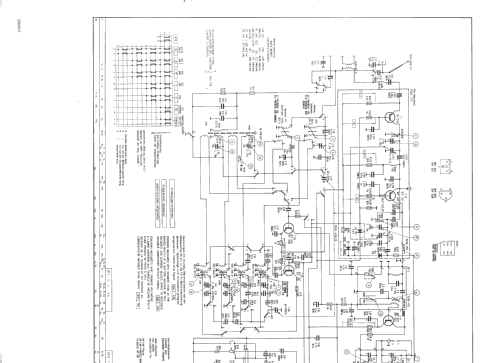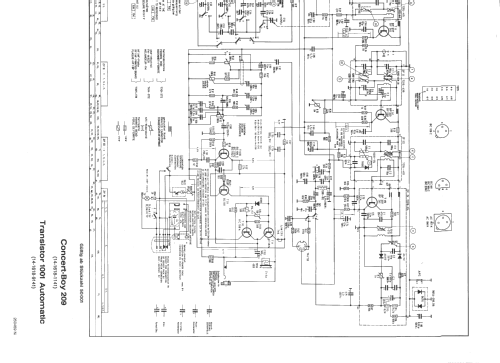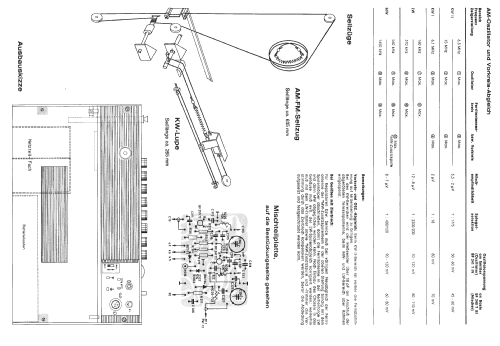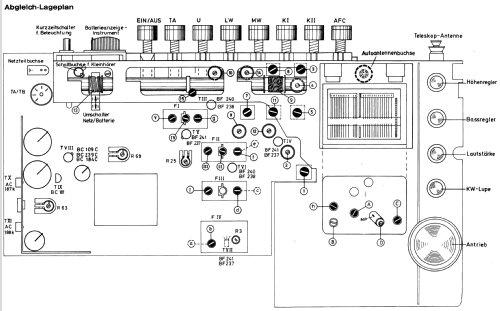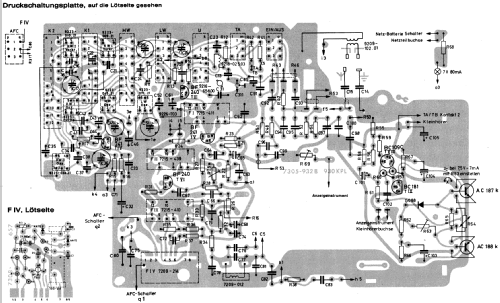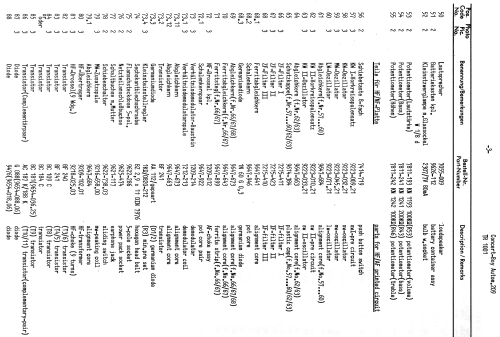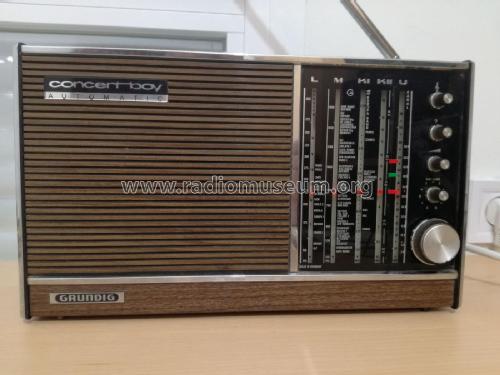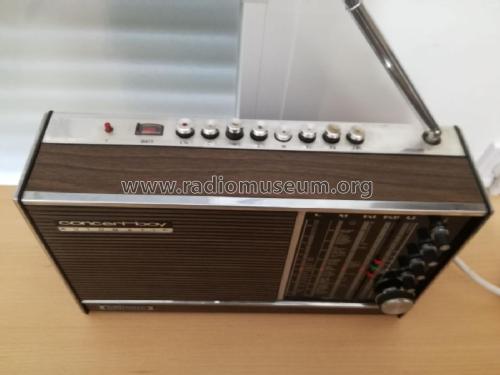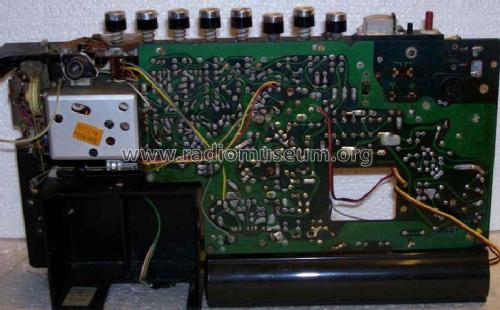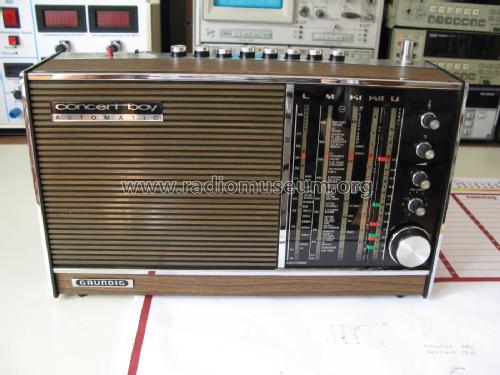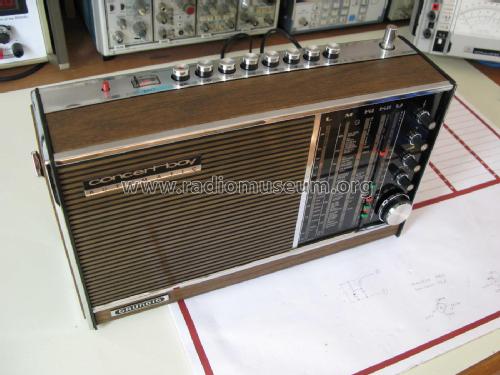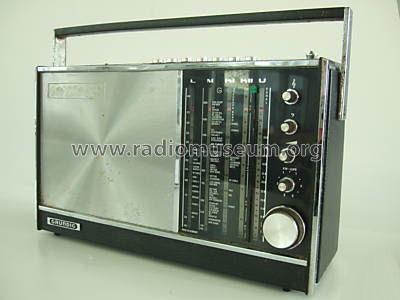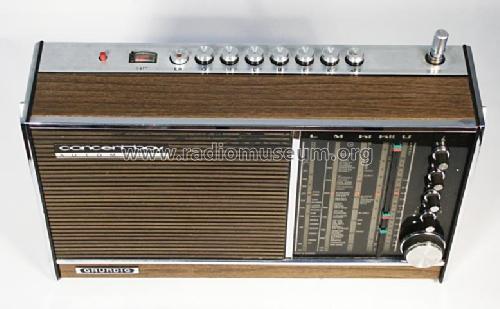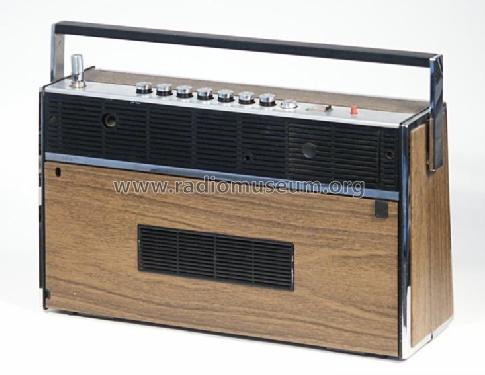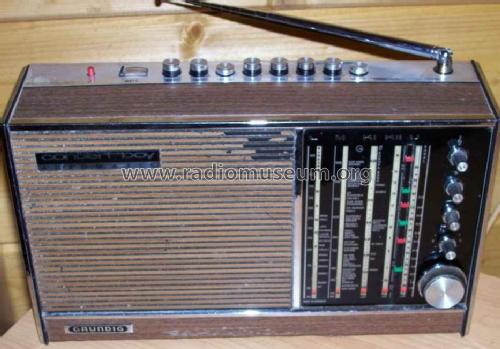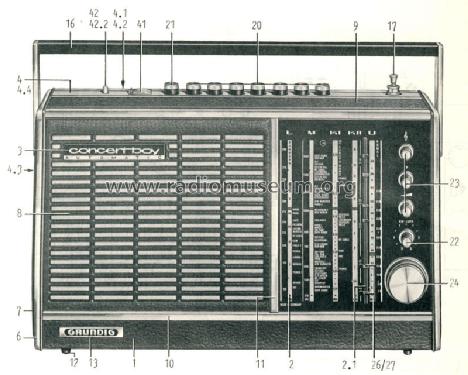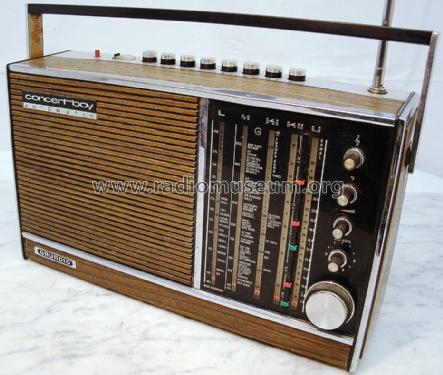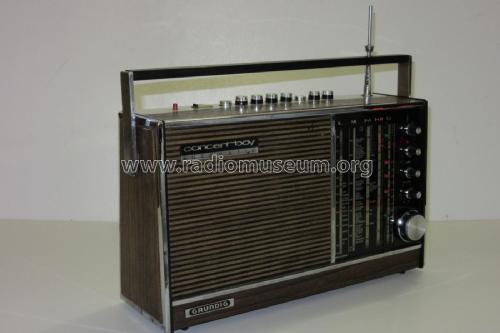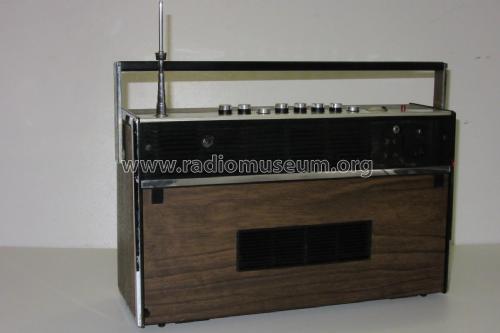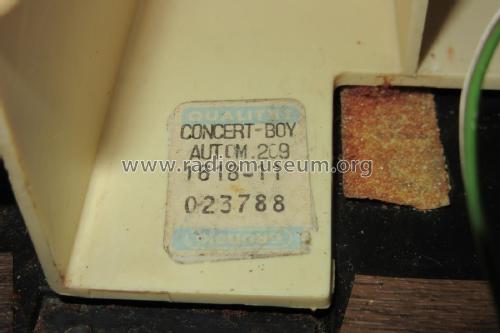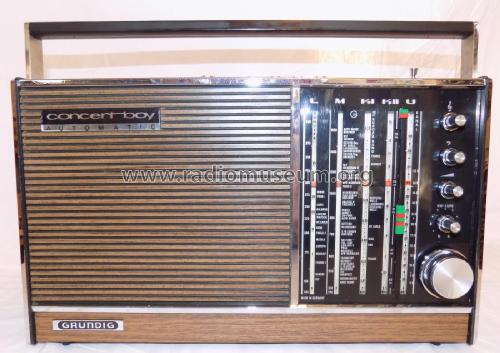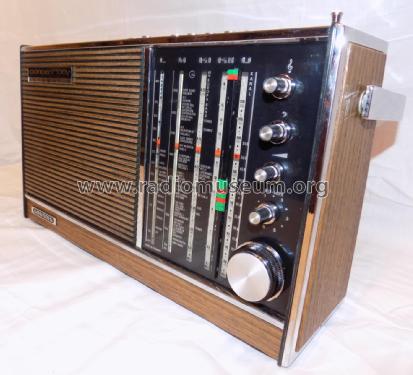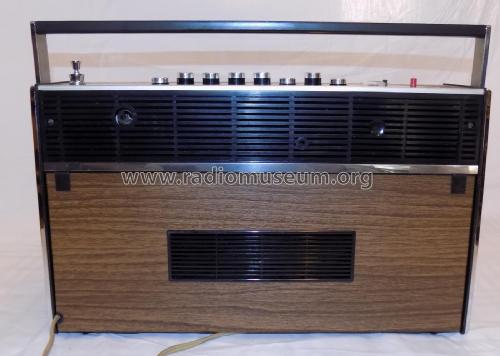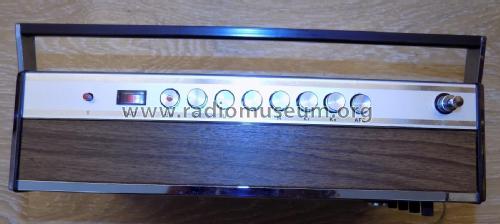Concert-Boy Automatic 209
Grundig (Radio-Vertrieb, RVF, Radiowerke)
- Paese
- Germania
- Produttore / Marca
- Grundig (Radio-Vertrieb, RVF, Radiowerke)
- Anno
- 1969/1970
- Categoria
- Radio (o sintonizzatore del dopoguerra WW2)
- Radiomuseum.org ID
- 2230
-
- alternative name: Grundig Portugal || Grundig USA / Lextronix
Clicca sulla miniatura dello schema per richiederlo come documento gratuito.
- Numero di transistor
- 12
- Principio generale
- Supereterodina (in generale); ZF/IF 460/10700 kHz
- N. di circuiti accordati
- 7 Circuiti Mod. Amp. (AM) 10 Circuiti Mod. Freq. (FM)
- Gamme d'onda
- Onde medie (OM), onde lunghe, 2 onde corte e FM.
- Tensioni di funzionamento
- Rete / Batterie (ogni tipo) / 110; 200 / 6×1,5 Volt
- Altoparlante
- AP magnetodinamico ellittico (magnete permanente e bobina mobile).
- Potenza d'uscita
- 2 W (qualità ignota)
- Materiali
- Plastica (non bachelite o catalina)
- Radiomuseum.org
- Modello: Concert-Boy Automatic 209 - Grundig Radio-Vertrieb, RVF,
- Forma
- Apparecchio portatile > 20 cm (senza la necessità di una rete)
- Dimensioni (LxAxP)
- 360 x 210 x 110 mm / 14.2 x 8.3 x 4.3 inch
- Annotazioni
-
Autobetrieb mit Autobatteriekabel (6 V bzw. 12 V); Betrieb mit dryfit-PC-Akku und Netzteil TN14 möglich.
Siehe auch die Exportausführung Transistor 1001 Automatic.
3 Ausführungen:
schwarz,
Nußbaum,
schwarz-gepolstert.
- Peso netto
- 4.1 kg / 9 lb 0.5 oz (9.031 lb)
- Fonte dei dati
- Handbuch VDRG 1969/1970 / Radiokatalog Band 1, Ernst Erb
- Letteratura / Schemi (1)
- -- Original-techn. papers.
- Altri modelli
-
In questo link sono elencati 6196 modelli, di cui 5420 con immagini e 4191 con schemi.
Elenco delle radio e altri apparecchi della Grundig (Radio-Vertrieb, RVF, Radiowerke)
Collezioni
Il modello Concert-Boy Automatic fa parte delle collezioni dei seguenti membri.
Discussioni nel forum su questo modello: Grundig Radio-: Concert-Boy Automatic 209
Argomenti: 1 | Articoli: 4
One of our visitor is asking per "contact" form where to locate the switch between battery mode and mains power.
We have the drawings and schematic on this site, but no user's manual... And I do not own this model to look at it.
Something tells me that most likely the swich is located in the battery box, which can be probably accessed from the bottom of the device, eventually removing the back of it.
Can one of our member help?
Thank you in advance
Administration-FR from Radiomuseum
Vincent de Franco, 24.Nov.16
